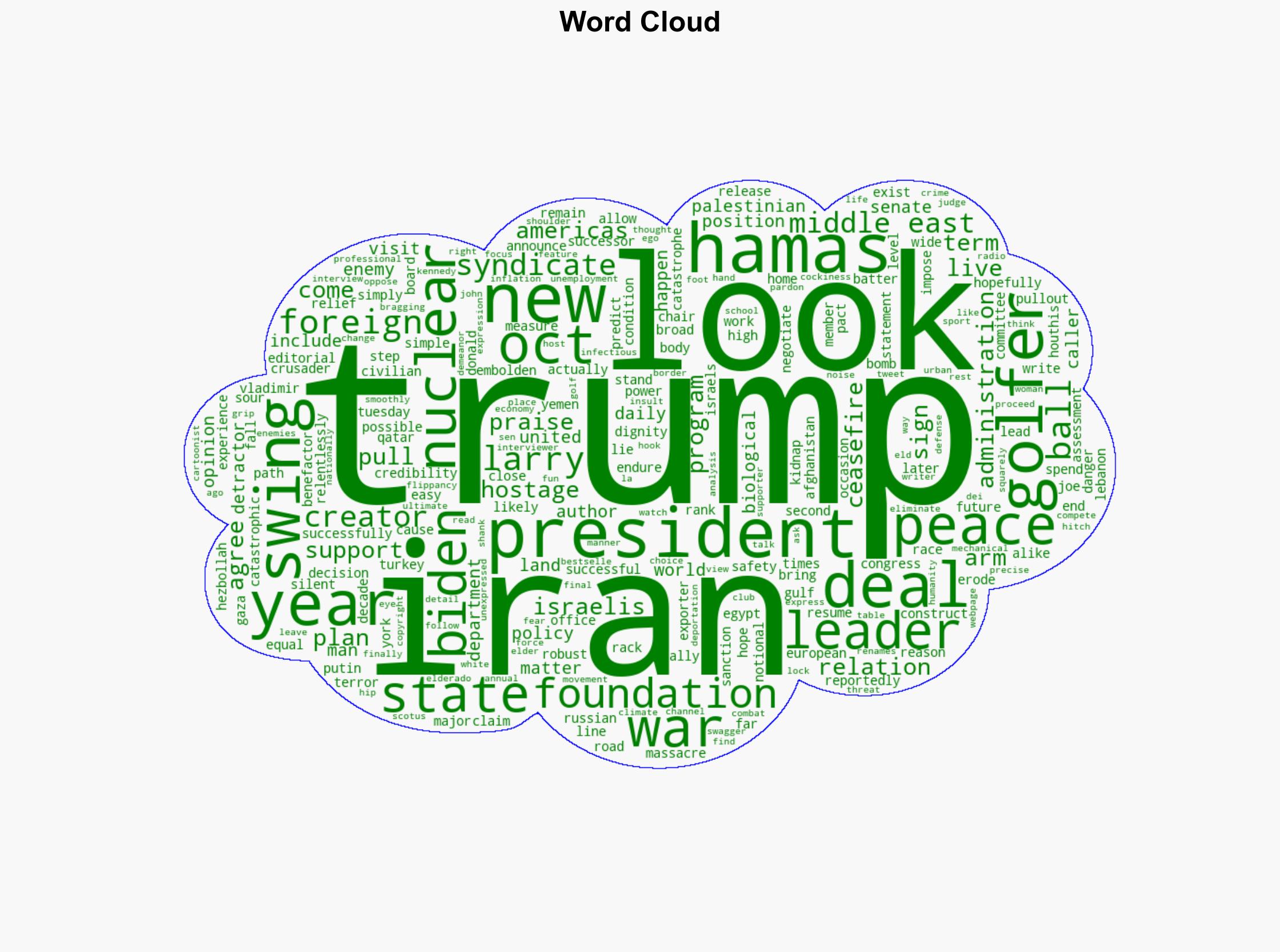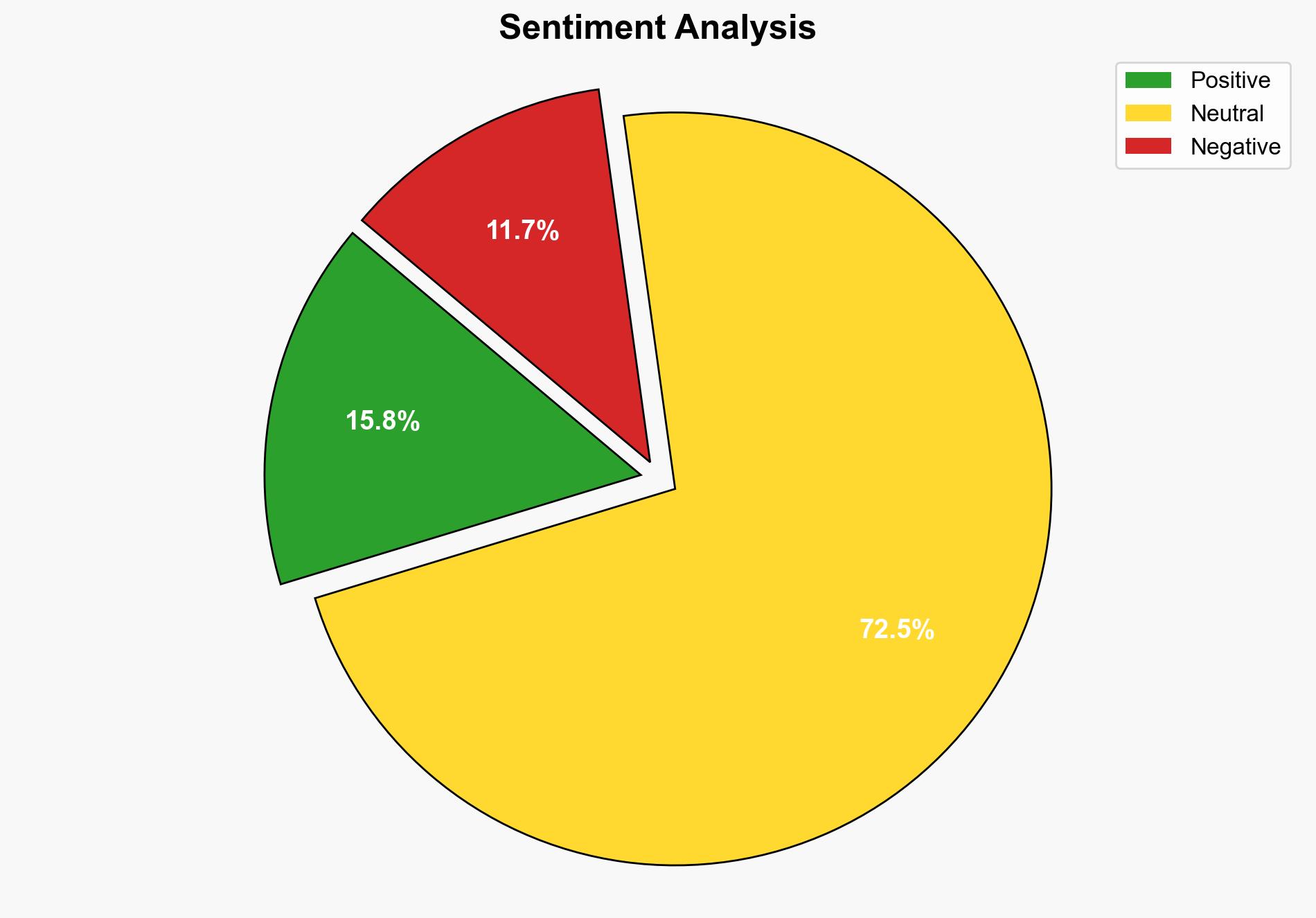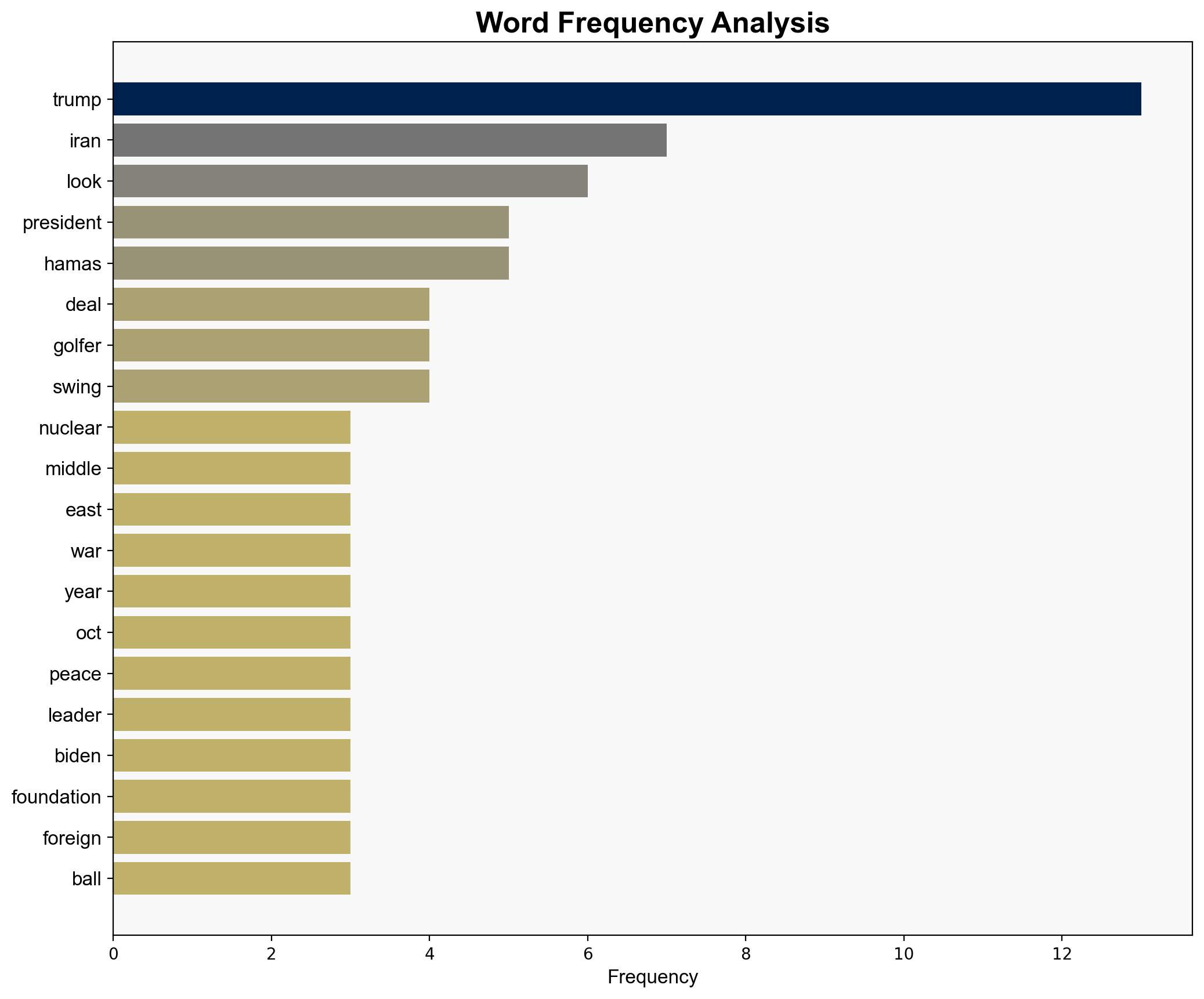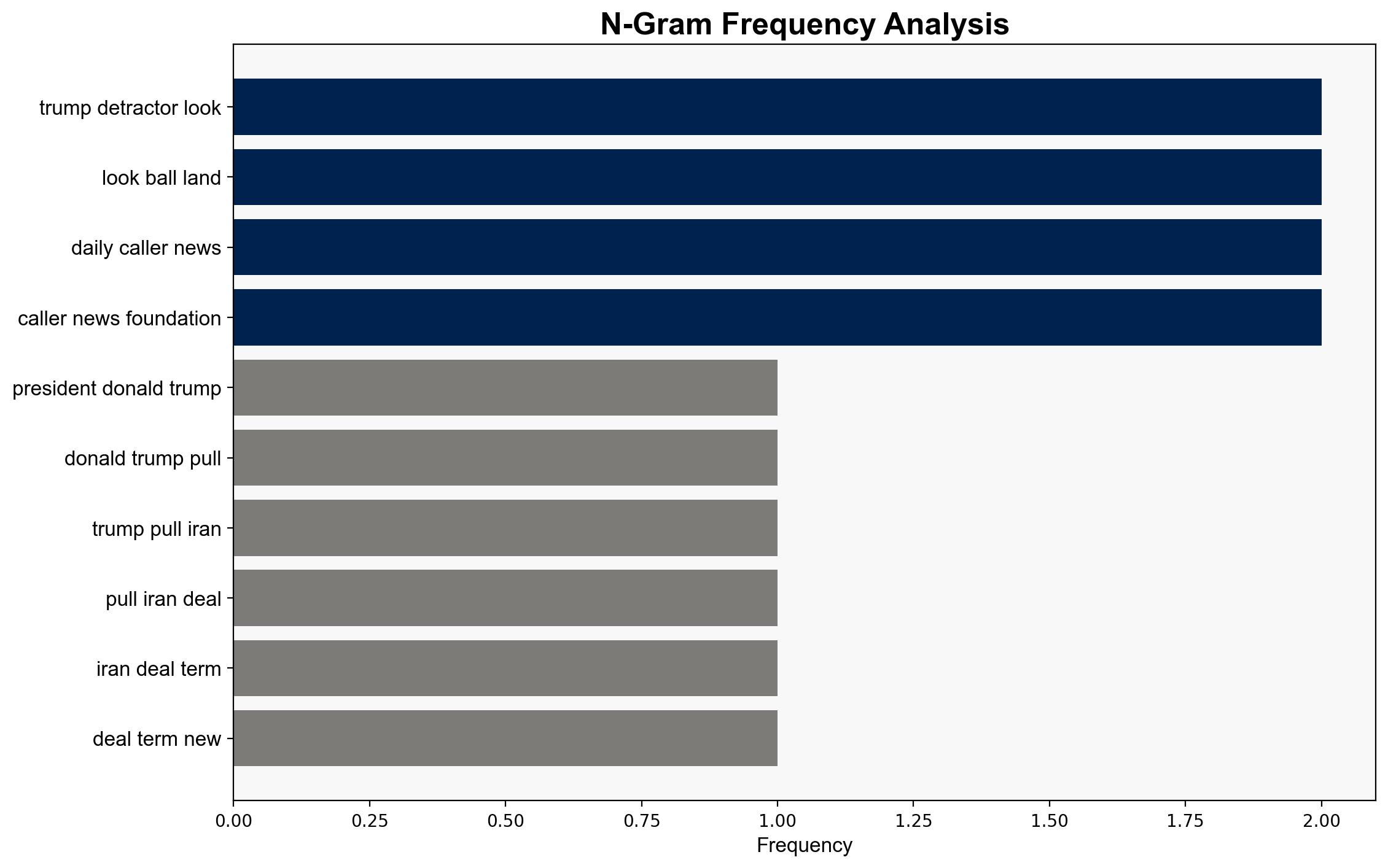LARRY ELDER What Trump Says To Detractors After Ceasefire – The Daily Caller
Published on: 2025-10-18
Intelligence Report: LARRY ELDER What Trump Says To Detractors After Ceasefire – The Daily Caller
1. BLUF (Bottom Line Up Front)
The most supported hypothesis is that former President Donald Trump’s actions in the Middle East, particularly regarding the Iran nuclear deal and the recent ceasefire, are part of a strategic effort to position himself as a key negotiator for peace and stability in the region. Confidence level: Moderate. Recommended action: Monitor developments in U.S. foreign policy and Middle Eastern responses to assess the long-term impact on regional stability.
2. Competing Hypotheses
1. **Hypothesis A**: Trump’s actions, including the withdrawal from the Iran nuclear deal and the negotiation of a ceasefire, are primarily driven by a strategic vision to reshape U.S. influence in the Middle East, aiming for long-term peace and stability.
2. **Hypothesis B**: Trump’s actions are largely motivated by domestic political considerations, using foreign policy achievements to bolster his image and distract from domestic criticisms.
Using the Analysis of Competing Hypotheses (ACH) 2.0, Hypothesis A is better supported due to the alignment of Trump’s actions with a broader strategic narrative of reshaping U.S. foreign policy, despite the domestic political benefits.
3. Key Assumptions and Red Flags
– **Assumptions**: It is assumed that Trump’s actions are coherent and part of a larger strategic plan rather than isolated decisions. Another assumption is that the ceasefire and negotiations are sustainable and not temporary measures.
– **Red Flags**: The reliance on Trump’s past foreign policy decisions as a predictor of future actions may overlook potential shifts in strategy. The lack of detailed information on the terms of the ceasefire and the roles of other international actors presents a blind spot.
4. Implications and Strategic Risks
– **Geopolitical Risks**: The withdrawal from the Iran deal could lead to increased nuclear proliferation risks in the Middle East. The ceasefire, while positive, may be fragile and subject to collapse if not supported by robust diplomatic efforts.
– **Economic Risks**: Sanctions and economic pressures on Iran could lead to regional instability, affecting global oil markets and economic relations with European allies.
– **Psychological Risks**: Trump’s approach may polarize domestic and international audiences, potentially undermining U.S. credibility if perceived as inconsistent or self-serving.
5. Recommendations and Outlook
- Continue diplomatic engagement with Middle Eastern and European partners to ensure the sustainability of the ceasefire and address nuclear proliferation concerns.
- Monitor domestic political narratives to assess potential shifts in U.S. foreign policy priorities.
- Scenario Projections:
- Best Case: Sustainable peace agreements lead to long-term stability in the Middle East.
- Worst Case: Breakdown of the ceasefire and renewed hostilities escalate into broader regional conflict.
- Most Likely: Continued diplomatic negotiations with intermittent tensions and temporary resolutions.
6. Key Individuals and Entities
– Donald Trump
– Joe Biden
– Vladimir Putin
– Leaders of Qatar, Turkey, Egypt, and Gulf states
7. Thematic Tags
national security threats, foreign policy, Middle East peace process, geopolitical strategy





